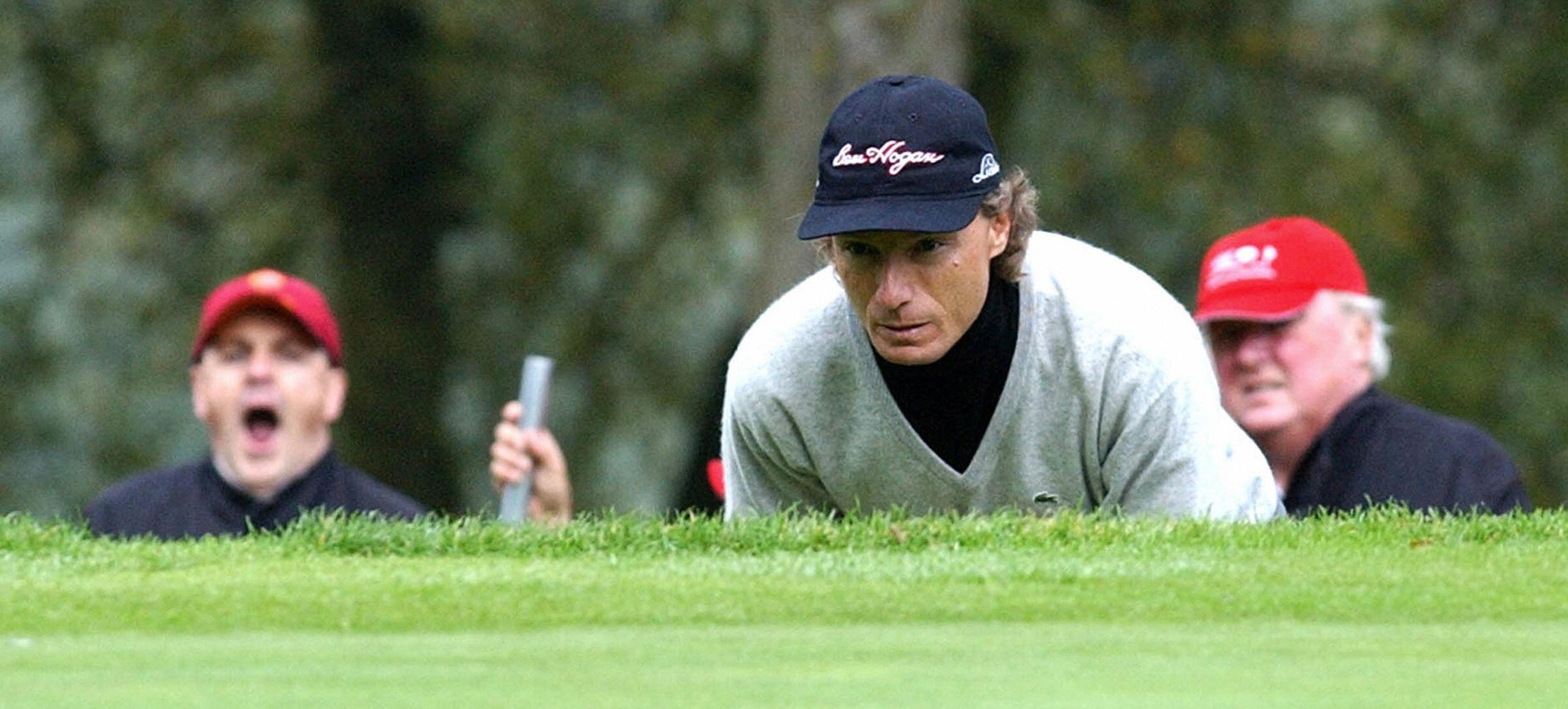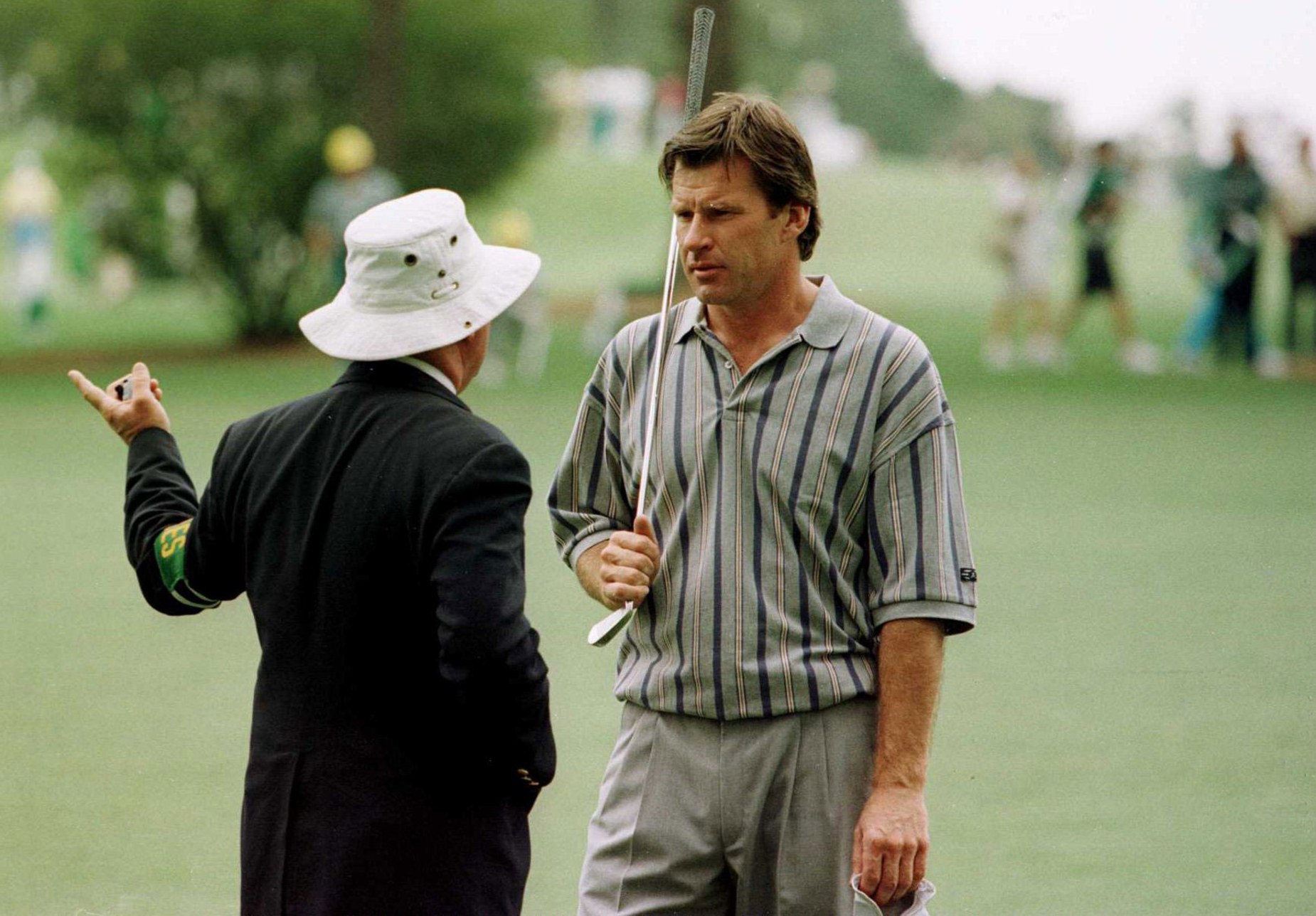It was Mark Russell, the long-time PGA Tour rules official, who summed up the ongoing issue of slow play not long after what remains one of the most famous pace-of-play brouhahas of all time, the clash in 2005 between Rory Sabbatini and Ben Crane: “We’ve got a very simple problem out here,” he said. “We’ve got players who want to go 120 miles an hour and then we’ve got players going about 40, sometimes less. We’d like to see everyone between 55 and 65. As it is, there are bound to be problems.”
Pace of play has been an issue in golf since the Scots first laid out St Andrews. Jack Nicklaus played at 40 (on a good day). Tom Watson and Tom Kite were well over 70. Curtis Strange was closer to 40 – and Nick Faldo and Bernhard Langer were considerably slower than that.
Arnold Palmer was around 70. In 1994, after completing his first round of his final US Open in near darkness after taking five-plus hours getting around Oakmont Country Club, Palmer shook his head and said, “In the old days, we never took more than four-and-a-half hours, and that was even with Jack on the golf course.”
Almost a quarter of a century later, the problem remains as rampant and as infuriating as ever. The latest example came this past weekend at the Dubai Desert Classic, where the eventual winner, Bryson DeChambeau marched to a seven-stroke victory… one tedious step at a time. By the clock of our John Huggan, DeChambeau took more than a minute to prepare for his birdie putt on the 72nd hole, a comical amount of time given his win was already assured. This came after he took one minute and 45 seconds over a putt on the 15th hole – and he wasn’t the first to putt in his group. And when one of DeChambeau’s lively conversations with his caddie was shared on social media, more than a few responded by mentioning that the lengthy exchange did little to deter others from taking their good old time.
This came a week after another unusual turn of events at the Latin American Amateur Championship, a still nascent tournament where the winner receives an invitation to the Masters. During the third round, the final threesome was put on the clock for slow play shortly after making the turn. One of the three, Mexico’s Alvaro Ortiz, didn’t want to risk a penalty, so he took off – literally – leaving the other two players, Luis Fernando Barco and Juan Cayro Delgado, in his wake.
After putting out on the 12th green, Ortiz walked to the 13th tee and hit his tee shot while the other two players were finishing on 12. He was down the fairway by the time they arrived. After they hit their tee shots, he hit his second shot and walked onto the green while they were preparing to hit their approach shots. It was at that point that Grant Moir, the R&A’s director of rules, told Ortiz, who would win the tournament the next day, he needed to slow down, that he was playing too fast.
“It’s a difficult situation,” Moir told Golf Digest. “You know he just wants to help the group get back into position.”
RELATED: Players try to explain the tours’ pace of play problem
If there is one subject that will stir debate in a tour locker room, it is the issue of pace of play. It can also lead to confrontations, such as the time years ago when Jerry Pate and Ronnie Black stood nose-to-nose on the first hole in Greensboro after Pate told Black walking off the tee that he needed to keep moving during the round because he didn’t want to get put on the clock because of Black’s meanderings. Black didn’t take the comment well, and the two men engaged in a spirited shouting match.
The slow-play moment that might be most most vividly remembered on tour took place almost 14 years ago, during the last round of the now-defunct Booz-Allen Classic, played that year at Congressional. By the (unfortunate) luck of the draw, Sabbatini (who had to slow down most days to play at slower than 100) was paired with Crane (who had to floor it to hit 40). Crane’s nickname among the rules officials is “The Anchor”. (The best rules officials slow-play nickname is Langer’s: Herr Sundial).

The two men were paired on Thursday and Friday and then, because they were tied after 36 and 54 holes, ended up together on Saturday and Sunday. Late in the final round, Sabbatini simply couldn’t take it anymore. After hitting his ball in the water at the 17th hole, he walked up to drop before Crane had played his second shot. Then, after putting out, he left the green while Crane was still circling his putt and walked to the 18th tee.
Paul Azinger, who was working the tournament on television, blasted Sabbatini for his lack of etiquette. So did many others in the media, in part no doubt, because Sabbatini can be prickly and because Crane is almost always a willing interview. Many players will tell you that slow play is a breach of etiquette. Playing at “a reasonable pace” is considered part of the game’s etiquette.
The day after the Sabbatini-Crane incident, I was standing on the range at Pinehurst – site of that year’s US Open – when Sabbatini walked out to hit some balls. It was late afternoon and there were perhaps 20 players practising. Almost every one of them stopped what they were doing and clapped for Sabbatini.
The consensus: maybe Sabbatini had gone too far but they all understood his frustration. On Sunday afternoon, Crane said he understood Sabbatini’s frustration. One thing that made Crane different from most slow players? He knew he was slow and admitted it.
“No one wants to be called slow,” Brad Faxon said years ago. “I know there are times when I’m slow but there’s a tendency for all of us to be in denial. We always have an excuse.”
RELATED: Yes, you can beat slow play

Actually, the entire US PGA Tour has been in denial for years. Commissioner Jay Monahan has said repeatedly that he doesn’t believe pace of play is an issue.
Monahan’s wrong. Pace of play is an issue at every level of golf, in part because everyone – from very good amateurs to weekend hackers, tend to take their cues from what they see the pros doing on television.
Monahan needs an intervention. Admitting you have a problem is half the battle when you are an addict, and Monahan’s tour is addicted to slow play. As is always the case, those going 40 control the traffic.
It isn’t a coincidence that many of the new Rules of Golf that went into effect at the start of this year try to address slow play: the time allowed to search for a ball has been cut from five minutes to three; the flagstick can be left in on the green while a player is putting; and players are now required to drop a ball to put it back in play from knee height, making it less likely that it will roll to a point of having to be picked up twice before finally being placed.
Given the opportunity the new rules present, wouldn’t it make sense for the PGA Tour – and the European Tour and the LPGA and all the other pro tours out there – to take a renewed look at the issue to see it can be addressed?
Six years ago, the USGA produced a series of short, public-service announcements entitled “While we’re young”, (stolen from the Rodney Dangerfield line in “CaddyShack”) to encourage faster play. Among those who took part were Palmer and, in a twist, Tiger Woods, who was considered slow when he first came on tour but, according to rules officials eventually “got the hang of it”. (His speed is probably about 50 or 55 these days.) The point was to encourage players at all levels of the game to play faster. It was clever but did little – if anything – to change things on the tour.
Here’s why: the only way to get players to play faster is to regularly penalise them strokes for slow play and to do it without letting anyone make excuses.
The current system is about as effective as prohibition was for the simple reason that it isn’t a deterrent. It is complicated, convoluted and much too easy to skirt without serious penalty.
It begins when a group is given a pace-of-play “warning” because it is out of position. If that continues, the group or an individual will be put on the clock. If a player is put on the clock 10 times in a year he is fined $US25,000 – roughly the equivalent of a T-40 finish most weeks on the PGA Tour. (As part of its policy, the tour – a.k.a. the CIA of sports because it tries to keep all player discipline a deep, dark secret – doesn’t announce who has received those minimal fines.)
Once on the clock, if a player receives a bad time, he is given a warning. If he receives a second bad time during that round, only then does a one-stroke penalty come into effect. Two years ago in New Orleans, the team of Miguel Angel Carballo and Brian Campbell were given a one-stroke penalty after each received a second bad time. The last individual to get a bad time was Glen Day – in 1995 at the Honda Classic. Day’s nickname was “All” – with good reason.
Here’s what should happen: if you are out of position, you’re on the clock. If you get a bad time after being put on the clock, you get a one-stroke penalty. No warnings – being put on the clock is your warning – and everyone will know you were penalised. That will hit players in their wallets and embarrass them all at once. If players were regularly docked strokes for slow play, you can bet they’d pick things up long before they were even on the clock.
Rules officials will tell you that once a player gets a bad time, he will inevitably pick up the pace and, almost as inevitably, play better.
“These guys aren’t idiots,” one rules official said. “If they know a bad time is going to get them a one-stroke penalty, they get moving. Even the slow ones suddenly figure out how to play faster.”
It’s not that hard. The tour could fix about 90 percent of the problems very fast if it would only admit too many players are slow. It would be nice if they’d do something while we’re young.
